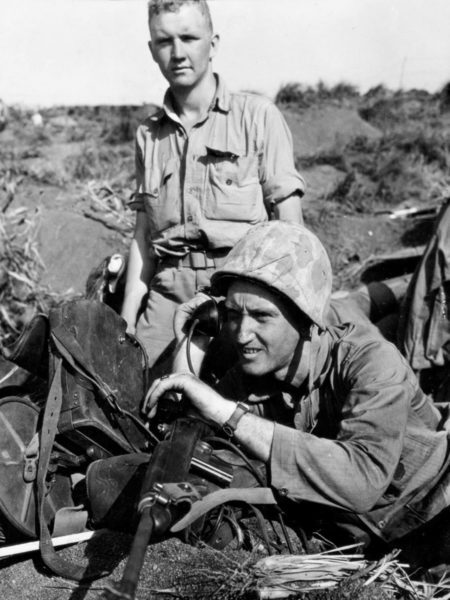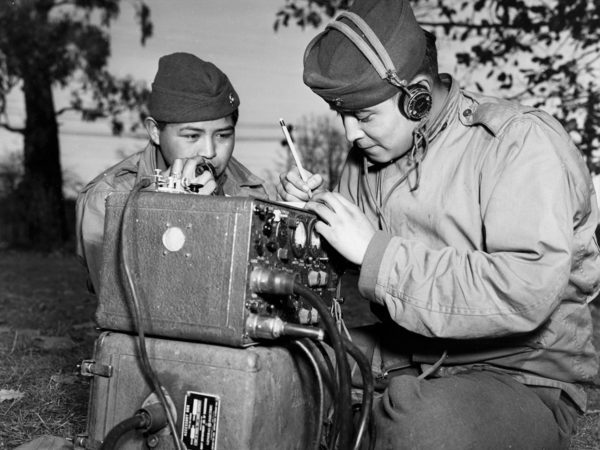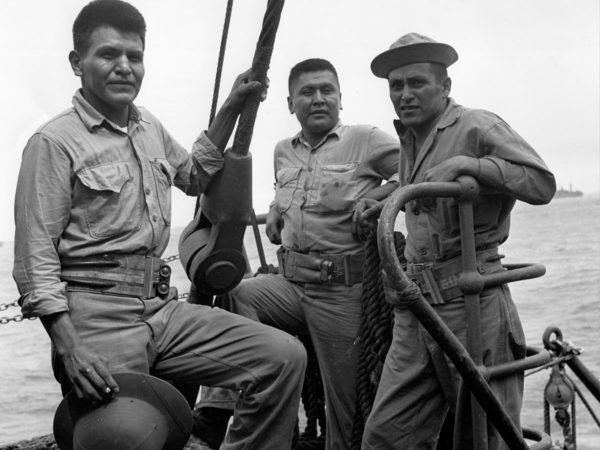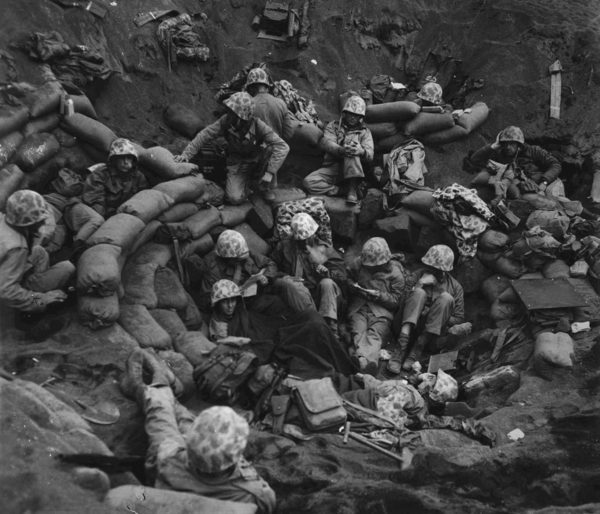Seventy-five years ago, on February 19, 1945, the combined forces of US Task Force 51 stood off the strategically important island of Iwo Jima. After three days of intense naval bombardment, the first wave of Marines went ashore beginning at 08:59.
The following battle lasted five weeks and resulted in some of the bloodiest fighting in Marine Corps history. Amid the intense close-quarter action, the combined arms tactics, advanced US firepower, and traditional Leatherneck heroism, a uniquely American innovation in combat communications made a huge difference.
Encrypted communications courtesy of American diversity
Throughout the battle, Marines were able to openly send and receive encoded messages by radio or by tactical telephone thanks to the efforts of the “Navajo Code Talkers”. These bilingual Navajo men were specifically recruited by the Marines to handle special communications in the Pacific Theatre in World War II. The Navajo language was understood by a tiny few outside of their tribe and coupled with the Code Talkers’ own special military dialectic modifications, this created an open channel code that the Japanese had no chance to decipher.
During the critical first two days of the Iwo Jima battle, the 5th Marine Division had six Navajo Code Talkers working around the clock. Ultimately, they transmitted more than 800 messages, and relayed them all without a single mistake.
Major Howard Connor, Signal Officer of the 5th Marine Division proclaimed, “Were it not for the Navajos, the Marines would never have taken Iwo Jima.”
We proudly honor the sacrifices made by the United States Marine Corps and the Navajo Code Talkers 75 years ago. We’ve compiled some images from Iwo Jima during WWII below. Click or tap on each image for a larger view.
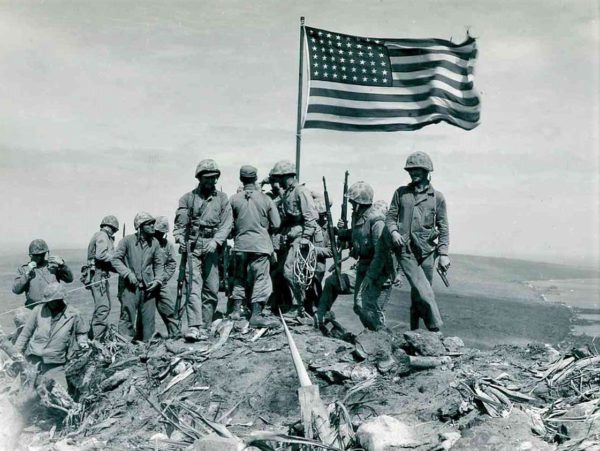
Marines gather around the flag raised atop Mount Suribachi, one of the enduring symbols of American victory in World War II.
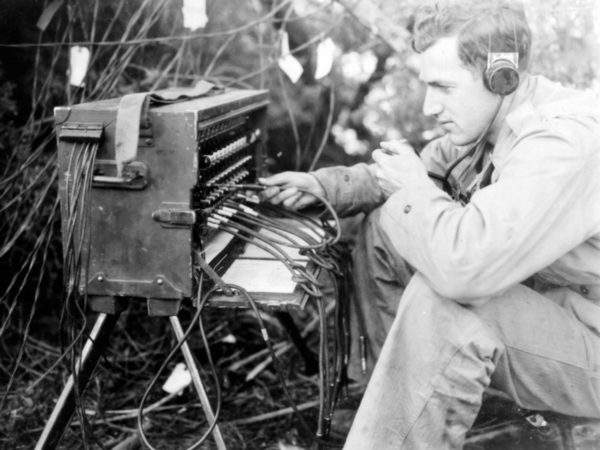
The Tactical Network circa 1945: Marines with the BD-71 field telephone switchboard, used with the EE-8 field phone. The operator wears the HS-30 headset.

 Español
Español